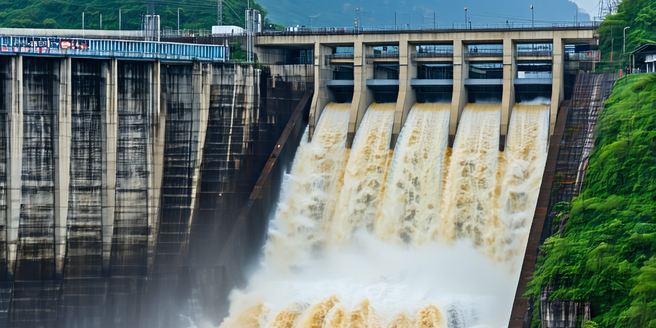
Introduction to Hydroelectricity and Climate Influence
Hydroelectricity is a critical renewable energy source, deriving power from water flow in rivers and streams. Its output depends largely on climate conditions, particularly rainfall patterns. Increased or decreased rainfall can significantly influence the volume of water available for electricity generation, creating fluctuations in energy supply. In regions where rainfall is abundant, hydroelectric plants can operate at full capacity, providing a stable energy source. However, in areas prone to drought, these plants may face challenges in maintaining consistent output. Understanding the interplay between climate and hydroelectricity is essential for planning and managing power generation to meet demand while considering ecological impacts.
Understanding Rainfall Variability and Its Impacts
Rainfall variability affects not only surface water availability but also the functionality of hydroelectric plants. Regions experiencing irregular precipitation may suffer from unpredictable energy supplies. This variability can stem from factors such as climate change, resulting in prolonged dry spells or intense downpours. Implementing advanced forecasting technologies can significantly aid in managing these challenges. Such conditions impact the reservoirs that supply water to turbines, sometimes leading to operational cuts or increased stress on infrastructure. Observing and predicting these patterns helps in optimizing plant operations to ensure sustainable energy output. Policymakers, engineers, and environmentalists must collaborate to address the challenges posed by changing rainfall dynamics.
Case Studies: Hydropower Plants and Regional Rain Patterns
Examining case studies of hydropower plants across different geographic locations illustrates the dynamics between rainfall patterns and energy production. Plants in South America, like Brazil’s Itaipu Dam, benefit from consistent heavy rainfall. Conversely, African regions, such as the Kariba Dam in Zimbabwe, face reduced output during droughts. The challenge of maintaining energy output despite climatic variability highlights the importance of strategic planning. These examples emphasize the need for adaptable management practices and infrastructure improvements. By studying diverse environments, researchers can gain insights into how various factors, including rainfall, topography, and climate influence hydropower efficiency. This knowledge is vital for developing resilient energy systems globally.
Technological Innovations in Predicting Rainfall Impact
Recent advancements in technology are revolutionizing how we predict and respond to rainfall impacts on hydroelectric power. Enhanced weather modeling tools and satellite-based monitoring systems have improved the accuracy of forecasts, allowing plants to anticipate and adapt to changes. These technologies offer insights into rainfall patterns, enabling operators to optimize reservoir levels and manage bursts of water flow. Innovations in data analytics assist in predicting seasonal variations, reducing the risk of sudden energy interruptions. The integration of smart grid technology enhances transmission efficiency, ensuring a stable supply despite fluctuations. As these systems evolve, they foster more responsive and sustainable hydropower generation.
Balancing Hydropower Generation with Environmental Concerns
The production of hydroelectric power must coexist with ecological conservation. While hydroelectricity is among the cleanest forms of energy, it can disrupt aquatic ecosystems. Reservoir creation changes water temperature and flow, affecting fish habitats and biodiversity. Hence, achieving a balance is crucial. Environmental impact assessments and sustainable water management practices are becoming standard in project planning. Measures include installing fish ladders, maintaining minimum flow levels, and enhancing water quality monitoring. These efforts aim to mitigate adverse effects while maximizing energy generation. By aligning with environmental goals, the hydropower sector can contribute to long-term ecological health.
Future Trends: Sustainable Hydroelectricity in a Changing Climate
The future of hydroelectricity in an ever-changing climate promises both challenges and opportunities. As global temperatures rise, water availability may become less predictable, influencing reservoir operations. However, innovations in technology and policy frameworks can foster more adaptive hydroelectric systems. Emphasizing sustainable practices, such as integrating complementary renewable sources like solar and wind, enhances energy security. Advances in turbine technology and improvements in system efficiencies herald a new era of hydropower, capable of adjusting to environmental shifts. Collaboration across sectors will be key in navigating these complexities, ensuring hydroelectric power remains a cornerstone of renewable energy portfolios worldwide.
